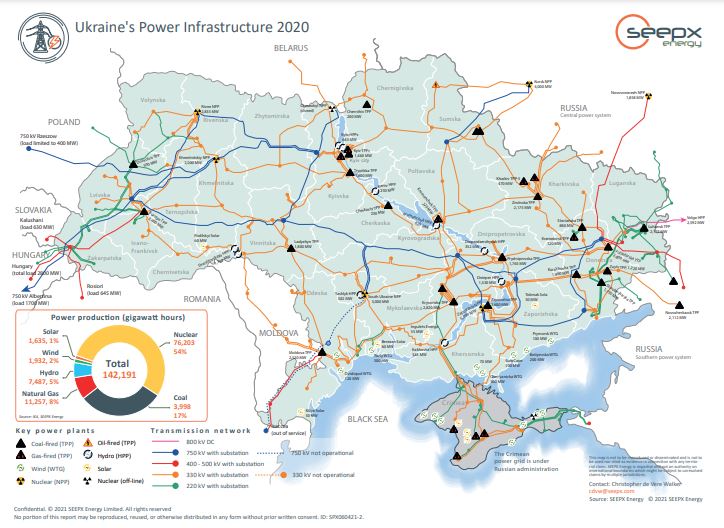
In terms of generation capacity, more than 50% of the country’s power is generated by nuclear, produced from several plants across the country. The next largest provider is coal, supplying about 17-20%, followed by gas and hydropower.
Renewable energy (including small hydropower plants) has been rapidly growing in recent years, in 2020 representing up to 10% of the energy output.
One of the key challenges facing the country is that its generation fleet is ageing. About 50-60% of generation capacity was built before 1980 and the bulk of Ukraine’s nuclear fleet was built between the ’80s and ’90s, with 3 GW built since. Notably, Ukraine’s nuclear fleet is Russian-designed VVER reactors. Much of Ukraine’s thermal capacity needs replacing and there has been little in the way of new generation built in recent times (with the exception of renewables).
How would you describe Ukraine’s strategic importance in terms of energy?
When Ukraine’s power grid was designed in Soviet times, it was never designed to be independent of Russia, it was designed to be operated as one integrated grid.
This presented a strategic weakness. During the 2014 incursions in East Ukraine, the grid was damaged, which presented a challenge to balancing power. Therefore, both Russia and Ukraine had to find ways to mitigate this, which meant developing grid infrastructure – something they have clearly done.
In particular, Ukraine has also been quite active in strengthening its grid in recent years, which has made them less vulnerable to Russia. Although it’s worth noting that Ukraine and Russia still maintained several links to ensure adequate balancing, such as in the northern and eastern parts of Ukraine, which are connected to several Russian nuclear plants. Essentially, Russian power exports to Ukraine have been growing in recent years—in 2021 net Russian exports to Ukraine reached 5.5TWh.

Map of Ukraine’s power infrastructure, credit: SEEPX
Ukraine has not been idle, although they still struggle with grid reliability and the system does not have sufficient flexibility. Ukraine lacks sufficient power reserves in thermal generation which means the system operator is constantly curtailing renewable output. Still, in 2020 the number of disturbances increased by more than 40% compared to 2019. The majority of all disruptions (58%) occurred in the overhead HV lines. Notably, 70% of transmission lines are in operation for more than 40 years and thus nearing the end of their service life.
Rather than building new power plants, with the exception of renewables, they have taken a more strategic approach, upgrading generation when feasible, building renewables despite intermittency challenges, and of course, strengthening the grid to unlock stranded capacity.
For many years, Ukraine has done a lot of work in synchronising its grid with the European grid, selling excess capacity to neighbouring countries.
Even though the connections are in place, such as to Poland, Slovakia and several connections into Hungary, Europe is cautious about purchasing power that might contradict EU green directives. ENTSO-E [the European Network of Transmission System Operators] would not welcome power generated by coal, for example.
Coupled with Ukraine’s grid stability, this has slowed Ukraine’s efforts to gain greater energy security through synchronisation with Europe.